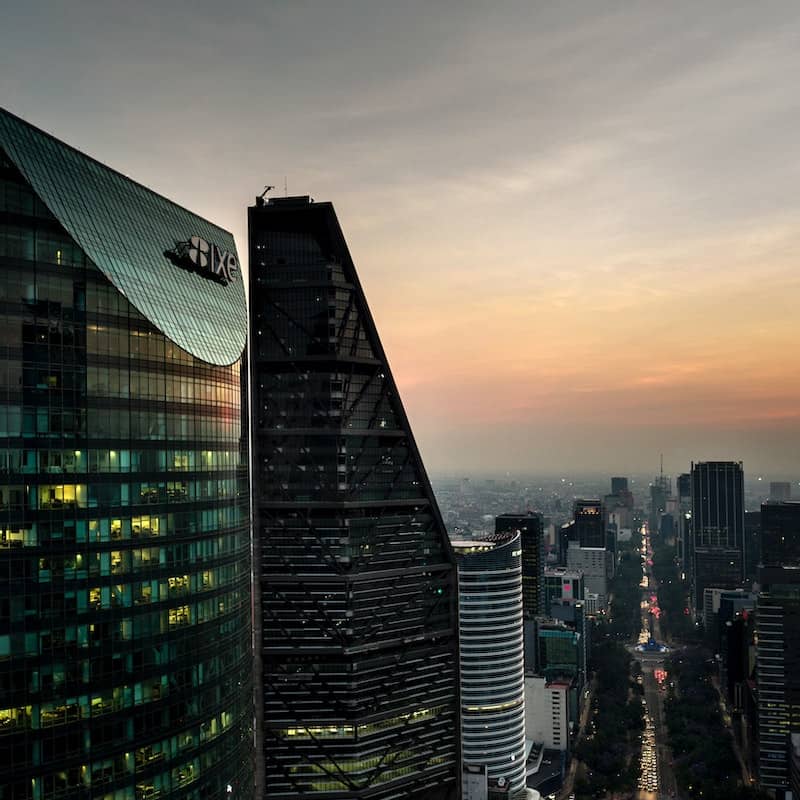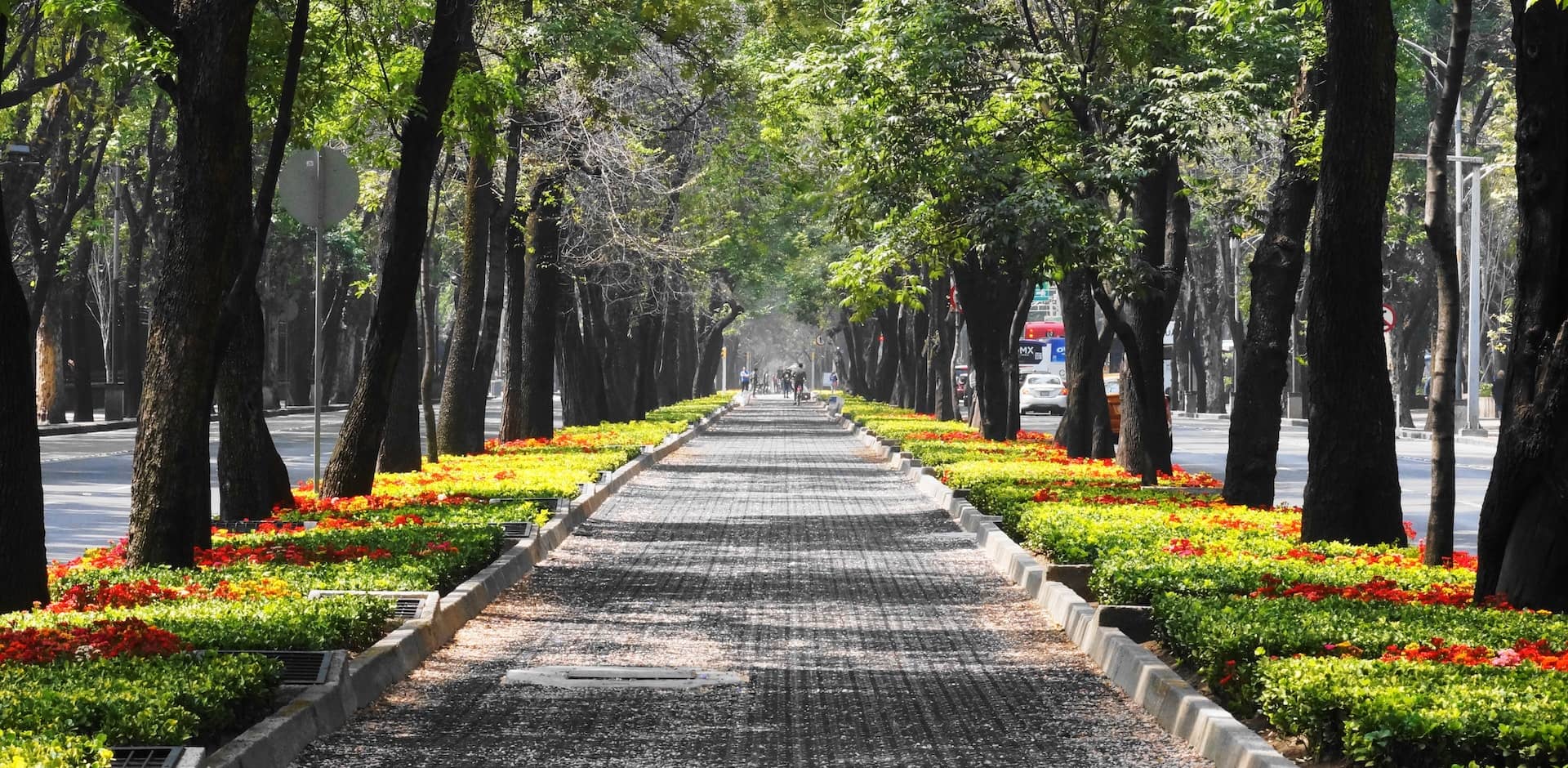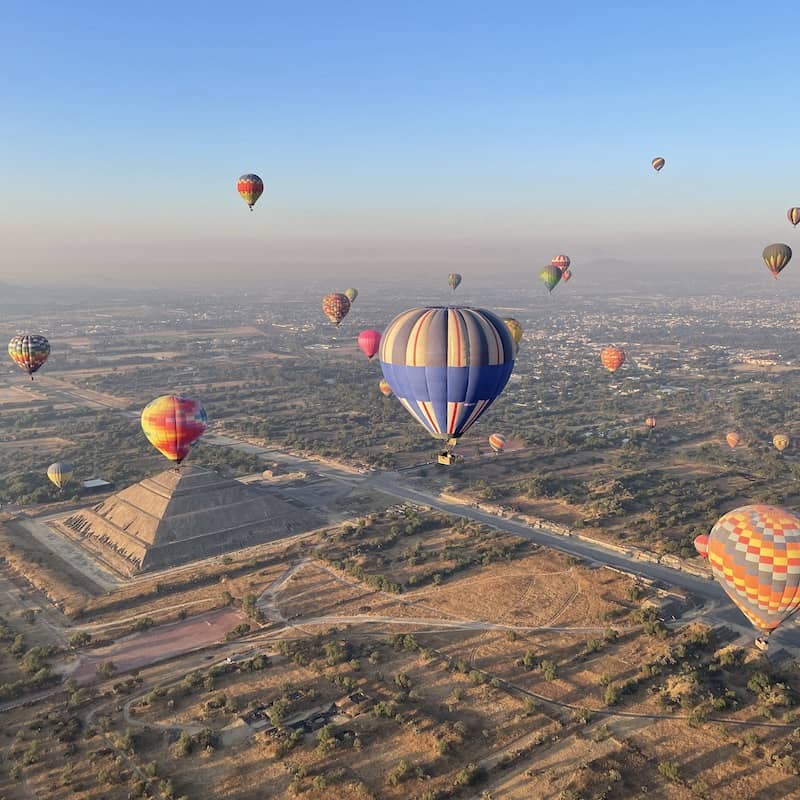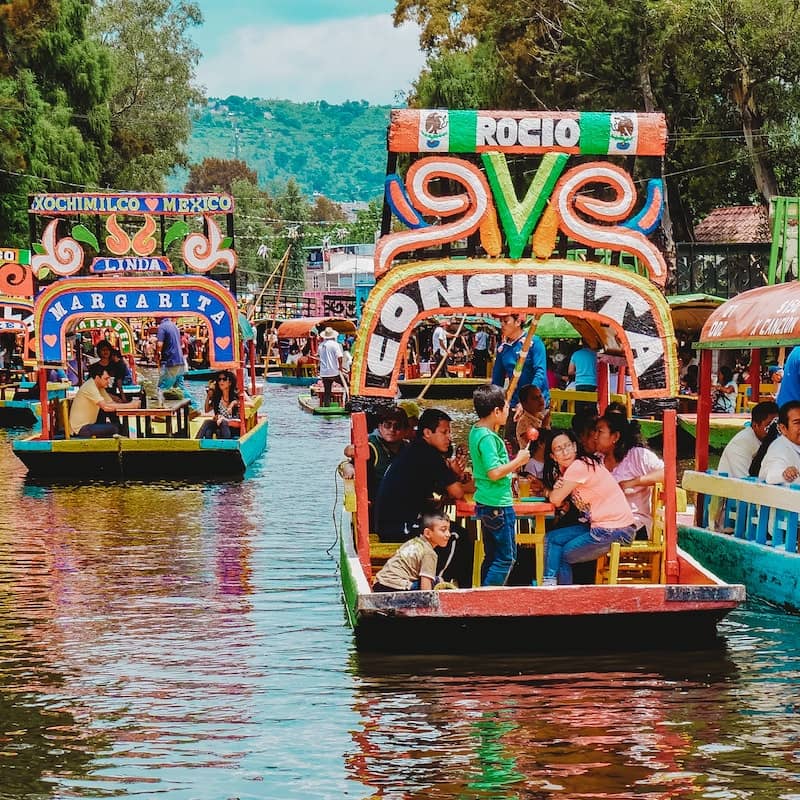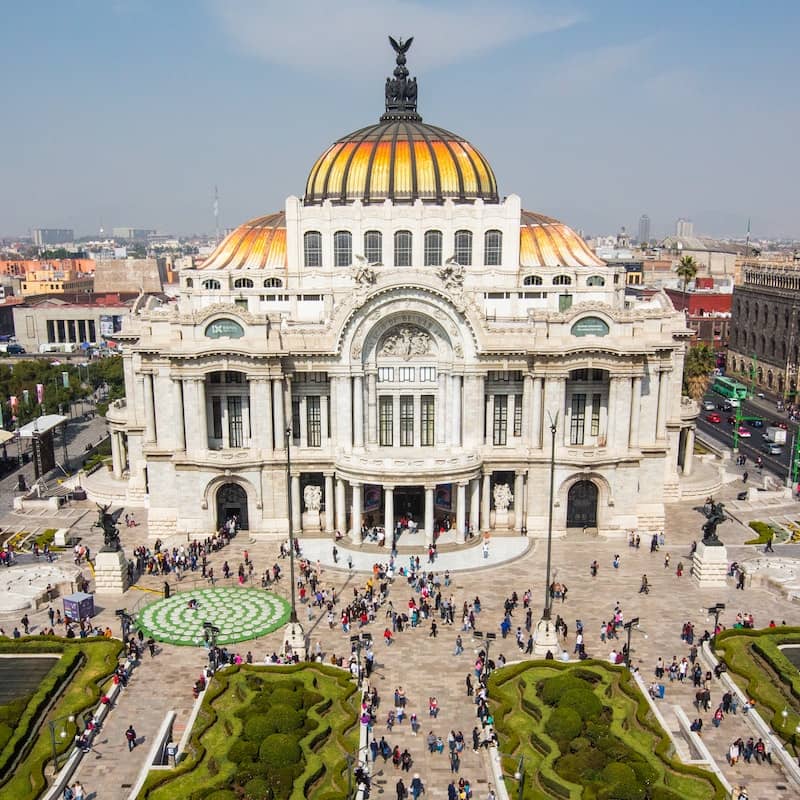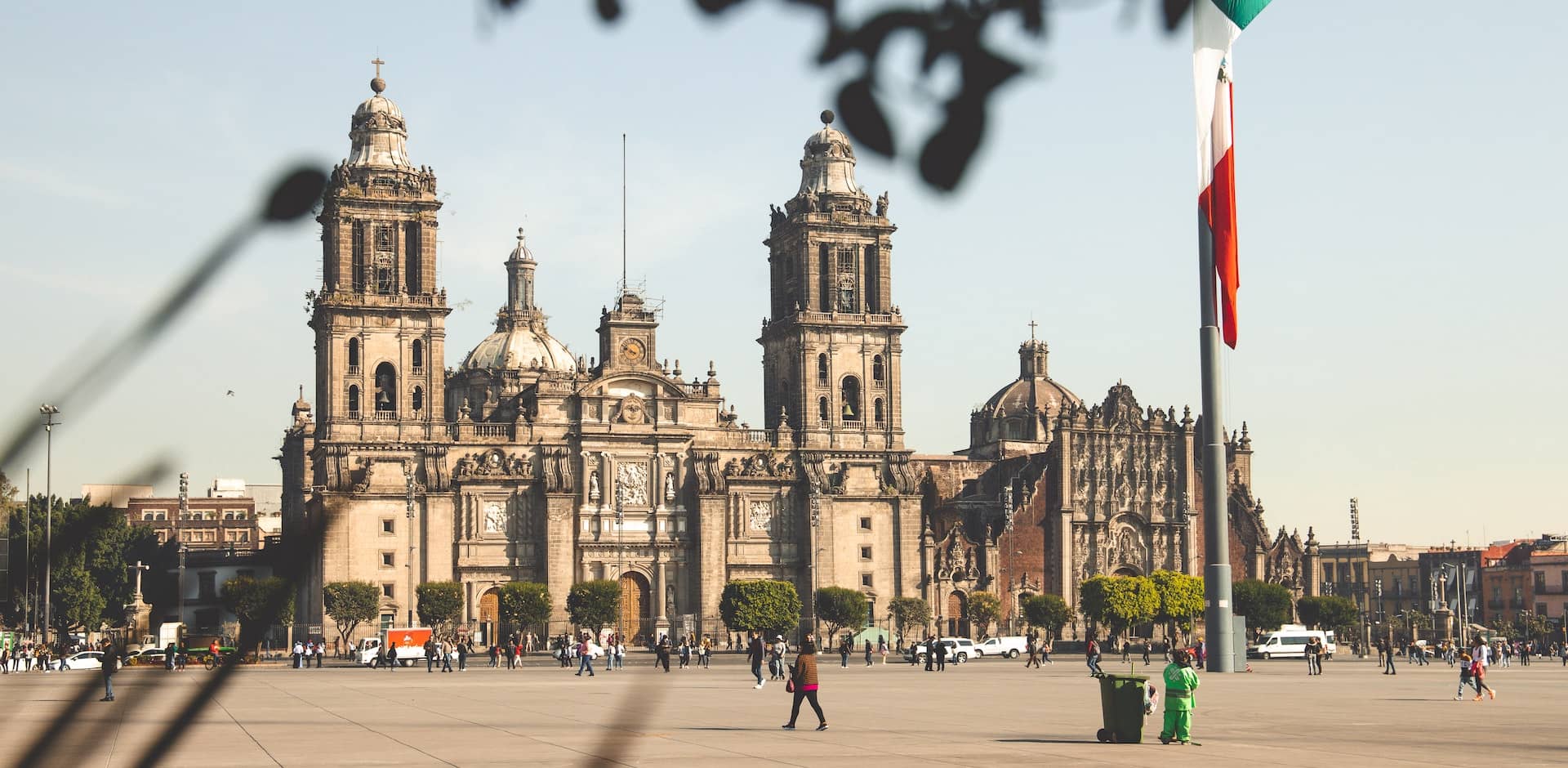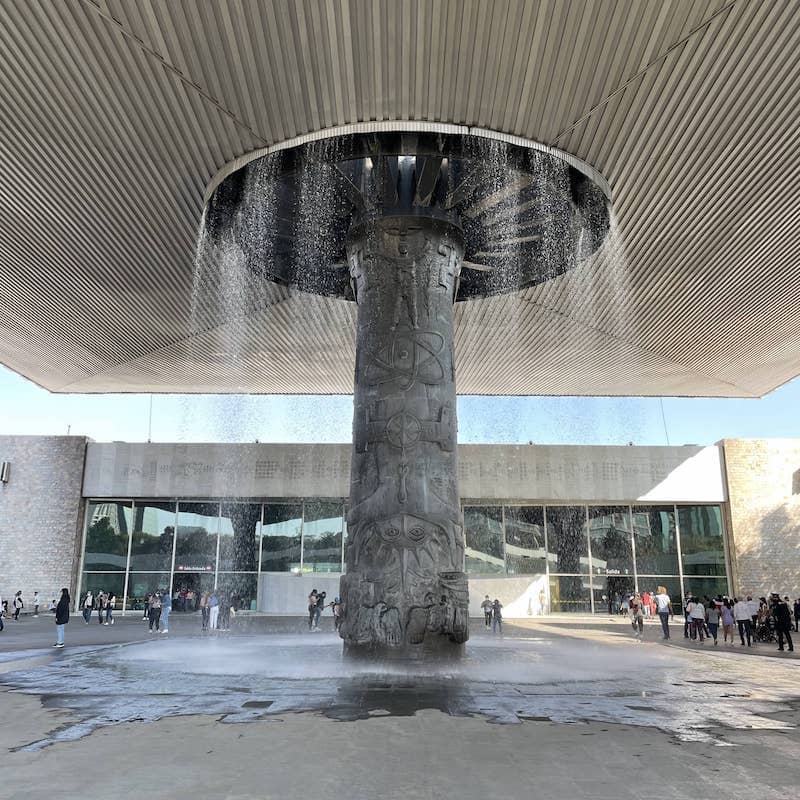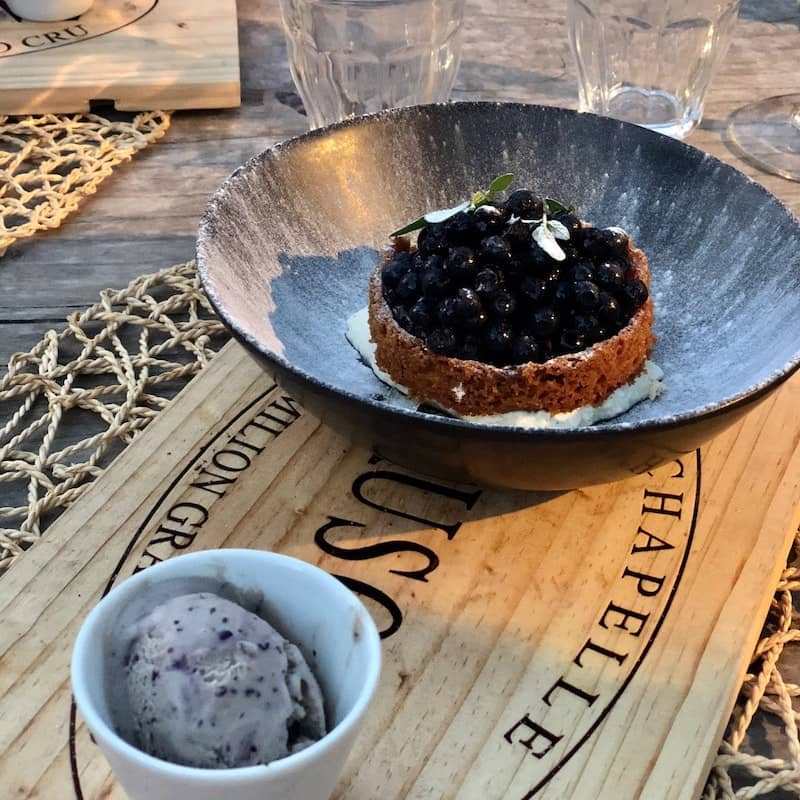What to do in Mexico City (CDMX)
The first time flying into Mexico City is an incredible sight. The sprawling city goes on for as far as the eye can see, taking over mountainsides far in the distance. With a population of around 22 million people, it’s easy to understand why many would find Mexico City a daunting place to travel, but with some careful planning and our firsthand tips and recommendations, you’ll be ready for the adventure of a lifetime.
Mexico City, which is commonly referred to as just CDMX (Cuidad de Mexico), is the largest city in North America and the 5th largest in the world. It’s impossible to see it all on one trip so our suggestion is to plan ahead. As the museum capital of North America, with what feels like museums on every block, it’s easy to get distracted. Here are our top tips on areas to stay, top excursions, can’t miss attractions, shopping, museums, restaurants, and a great night out.
Neighbourhoods to Stay
Roma Norte: Also known as Colonia Roma, Roma Norte is the hipster heart of the city and home to an increasing number of young professionals. Known for its nightlife, Roma Norte is where you go to have fun in Mexico City with the best bar scene, trendy restaurants, amazing street food on every corner, and clubs where you dance till the early hours. But Roma Norte is much about more than just going out to party. The streets are lined with lush greenery and ivy-covered art deco mansions. Charming artisan markets take place on the weekends along the main avenues and in the calm parks and plazas such as Plaza Rio de Janeiro. Best explored on foot, Roma Norte was designated a Barrio Magico in 2011, making it one of the city’s 21 most celebrated neighbourhoods.
Juarez: Over the last few years, the centrally located neighbourhood of Jaurez has come back into fashion, quickly becoming one of CDMX’s trendier areas. Once home to palatial mansions, wealthy residents and movie stars, this area was hit hard by the 1985 earthquake and for a period of time, the area fell off the radar of both residents and visitors alike. Today, boutique shops, quirky cafes and numerous restaurants have taken over historic buildings, bringing back the once-grand reputation Juarez so deserves.
La Condesa: In between Chapultepec Park to the west and Roma to the east, La Condesa is one of the most fashionable neighbourhoods in Mexico City. This young and stylish neighbourhood was once home to the artistic upper class which can be seen through its art deco and colonial revival architecture. Now with a mix of modern buildings, this dynamic neighbourhood, mixed with the young and trendy professionals that call it home, has an exciting, cosmopolitan feel. With a classy nightlife scene, designer shops and manicured parks, La Condesa will not disappoint.
Excursions
Sunrise Hot Air Balloon: Fly over the Teotihuacan Ruins including the Pyramid of the Sun, the largest ruin in Teotihuacan. As a UNESCO World Heritage Site, Teotihuacan Ruins is one of the most important and most visited of all Mexico’s archaeological sites. Just 45 minutes from Mexico City, you will soon be flying up to 3,000 feet in the air watching the sun rise over the Teotihuacan valley. This is certainly an excursion you don’t want to miss!
Xochimilco: Take a day trip to the “Venice of Mexico” known as Xochimilco, an array of canals south of Mexico City designated as a UNESCO World Heritage Site since 1987. Rent one of the many trajineras with friends, bring some music and drinks and have a fun day exploring the Floating Gardens of Xochimilco. Sure, it can be touristy, but it can be a lot of fun as well with lots of locals also taking part. The brightly coloured trajineras that cruise up and down the canals offer a great photo op and unique way of seeing this historic area.
Our tip – don’t go on the weekend as it can be insanely busy! Travelling solo? Join a tour for a more fun experience.
Attractions
Zócalo: The Plaza de la Constitución, or more commonly referred to as Zócalo, is one of Mexico City’s best known landmarks located in the heart of the city, and is one of the largest city squares in the world. Zócalo, meaning ‘base’, dates back to the time of the Aztecs and was used as their ceremonial hub. Today it is surrounded by the Palacio Nacional, the Cathedral Metropolitana and various government offices, and is often used for concerts, events, New Year’s celebrations and more.
Palacio de Bellas Artes: One of the most recognized and frequented destinations in Mexico City, The Palacio de Bellas Artes welcomes over 10,000 tourists and locals a week. The exterior of the building is covered in ornate white Carrara marble while the iron and Marotti crystal roof create spaces naturally illuminated by skylights. Construction started in 1905 under Italian architect Adamo Boari, which can be recognised by the neoclassical and art nouveau architectural styles of the exterior. With setbacks due to unsettled ground and the Mexican Revolution, the interior space was not completed untill the 1930s by architect Federico Mariscal who favoured the popular art deco style. Whether you come to admire the architecture or experience the many murals inside, this building is a must see.
Bosque de Chapultepec: London has Hyde Park, Vancouver has Stanley Park, New York has Central Park, and Mexico City has Chapultepec Park. At more than 1700 acres, this park is home to multiple museums including the world famous National Museum of Anthropology, along with botanical gardens, castles, lakes and a zoo. Surrounded by the posh neighbourhood of Polanco to the north and the trendy area of La Condesa to the east, Chapultepec Park offers a nice reprieve from city life and a place where you can easily spend a full day exploring.
Museums
Museo Nacional de Antropologia: The Anthropology Museum in Mexico City is one of the largest and most renowned museums in all of Mexico. This massive building located in Chapultepec Park houses the world’s largest collection of ancient Mexican artifacts spread across 23 rooms. The 12 ground-floor salas (halls) are dedicated to pre-Hispanic Mexico, while upper-level halls show how Mexico’s indigenous descendants live today. The impressive avant-garde concrete building was designed in 1964 by Mexican architect Pedro Ramírez Vázquez. The giant column fountain in the courtyard is worth the trip alone. Known as el paraguas, or ‘the umbrella’ in English, this sculpture is a reminder of our connection to nature. This museum is huge, so go prepared and expect to spend a full day if you want to see it all.
Museo Mural Diego Rivera: This museum houses the mural Sueño de una tarde dominical en la Alameda Central, or in English ‘Dream of a Sunday Afternoon in Alameda Park’, by Diego Rivera, husband of the world-famous painter Frida Kahlo. This 15-metre-long mural painted in 1947 is one of Rivera’s most famous works. Originally commissioned for the Hotel del Prado, Rivera was tasked with painting a mural in the dining room with a theme of the Alameda Central because of the hotel’s proximity to this important central park of the time. The mural caused scandal when unveiled as it portrayed many public figures and had the inscription “God does not exist”, which seems fitting as Rivera often created paintings that were controversial. After the devastating earthquake that shook Mexico City, it was decided to preserve this mural and the idea of the Diego Rivera Mural Museum was born, and three years later the mural moved into the museum located just across the street.
Soumaya Museum: Since its opening in 2011, the Soumaya Museum in Polanco has fast become one of the most iconic museums in Mexico City. Architecturally striking, this museum is free to enter and six stories high, making it a great way to spend an afternoon soaking in the art and not breaking the bank. In total, Museo Soumaya houses a large private collection of over 66,000 pieces of art which range from Mesoamerica to the modern day.
Restaurants
Supra Roma Rooftop: Supra may have one of the most unique 360-degree views in all of Mexico City and is one of the best rooftops to grab a drink in Mexico City. Through music, food and mixology, Supra is the perfect place to enjoy the sunset with great food and music.
Pujol: Located in the upmarket neighbourhood of Polanco, Pujol opened its doors in 2000. Named one of the best restaurants in Mexico by the Wall Street Journal, Chef Enrique Olvera’s cuisine is rooted in high quality ingredients and the different techniques of Mexican cuisine. Our tip, reserve as far in advance as possible.
Bars & Clubs
The Back Room: Located in the up and coming trendy neighbourhood of Juarez, this speakeasy style bar is one of the areas best-kept secrets. Hidden in the back room of a pizzeria, this spot pays tribute to the Prohibition era with a mainly classic menu.
Musak: This sleek and cool cocktail bar in Roma Norte is perfect for when you feel like getting dressed up for a great night out. Music is known as a “Hi-Fi Listening Bar” due to their phenomenal sound system and great line up of music, both recorded and live. They have perfectly-executed their cocktails and their menu is not to miss.
Bar Oriente: This one is for the late night party owls in all of us who just want to dance the night away. Located on the edge of Roma Norte and La Condesa, come here to listen to electronic DJs and dance until the early hours.
Departamento: The best way to describe this space is like being in your friend’s apartment for an intimate DJ session while 100 of your best friends dance to the beat. This intimate space features world wide DJs, great drinks, and cozy nooks to chat with friends. Upstairs a beer garden and food trucks offer a space to escape the music if desired.
Sunday Sunday: The ultimate definition of a Sunday Funday. Hosting weekly dance parties on Sundays from 3pm till late, this rooftop bar has multiple terraces overlooking Mexico City and often hosts internationally known DJs. Keep an eye on their Instagram for updates on events and where to buy tickets.

